
NGC 7080 is a barred spiral galaxy located about 204.5 million light-years away in the constellation of Vulpecula. It has an estimated diameter of about 100,000 light-years which would make it similar in size to the Milky Way. NGC 7080 was discovered by astronomer Albert Marth on September 6, 1863.

NGC 4492 is a spiral galaxy located about 90 million light-years away in the constellation Virgo. NGC 4492 was discovered by astronomer William Herschel on December 28, 1785. It was rediscovered by astronomer Arnold Schwassmann on January 23, 1900, and was listed as IC 3438. NGC 4492 lies in the direction of the Virgo Cluster. However, it is not considered to be a member of that cluster.

NGC 5774 is an intermediate spiral galaxy approximately 71 million light-years away from Earth in the constellation of Virgo. It was discovered by Irish engineer Bindon Stoney on April 26, 1851.
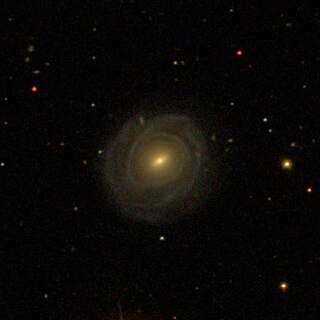
NGC 4326 is a barred spiral galaxy with a ring located about 330 million light-years away in the constellation Virgo. It was discovered by astronomer William Herschel on April 13, 1784, who described it as "vF, S, R, bM, 1st of 3". It is a large galaxy, with a diameter of around 200,000 ly (61 kpc) making it nearly twice the size of the Milky Way. NGC 4326 is also classified as a LINER galaxy. Despite being listed in the Virgo Cluster catalog as VCC 623, it is not a member of the Virgo Cluster but instead a background galaxy.
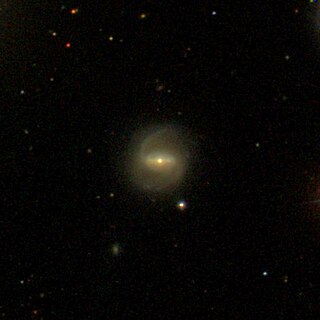
NGC 4333 is a barred spiral galaxy with a ring structure located about 330 million light-years away in the constellation Virgo. It was discovered by astronomer William Herschel on April 13, 1784, who described it as "F, pS, R, bM, 2nd of 3". NGC 4333 is also classified as a LINER galaxy. Despite being listed in the Virgo Cluster catalog as VCC 637, it is not a member of the Virgo Cluster but instead a background galaxy.

NGC 3758 known as the Owl Galaxy, is a type Sb spiral galaxy in the constellation of Leo. It is located 447 million light-years from the Solar System and an approximate diameter of 70,000 light-years. NGC 3758 was discovered by Ralph Copeland on March 18, 1874, but also independently discovered by Edouard Stephan ten years later.

NGC 3746 is a large barred spiral galaxy with a ring structure located in the Leo constellation. It is located 449 million light-years from the Solar System and has an approximate diameter of 165,000 light-years. NGC 3746 was discovered by Ralph Copeland on 9 February 1874 with subsequent observations made by Hermann Kobold, Lawrence Parsons and John Louis Emil Dreyer.

NGC 3753 is a large spiral galaxy with a bar located in the Leo constellation. It is located 435 million light-years away from the Solar System and was discovered on February 9, 1874, by Ralph Copeland.

NGC 3754 is a small barred spiral galaxy located in Leo. It is located 447 million light-years away from the Solar System and was discovered on April 5, 1874, by Ralph Copeland.
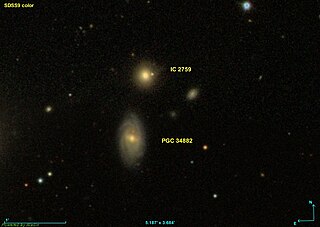
IC 2759 is a small type E elliptical galaxy located in the constellation of Leo. It is located 350 million light-years away from the Solar System and was discovered on April 24, 1897, by Guillaume Bigourdan. Sometimes IC 2759 is confused with the spiral galaxy, PGC 34882 which is located south of the galaxy.
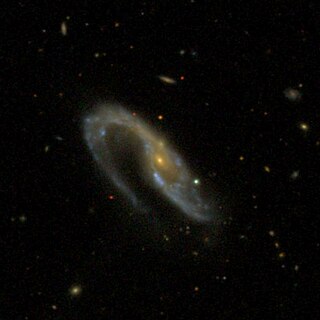
NGC 3509 known as Arp 335, is a barred spiral galaxy located in the constellation Leo. It is located 340 million light-years from the Solar System. NGC 3509 was discovered by astronomer William Herschel on December 30, 1786.
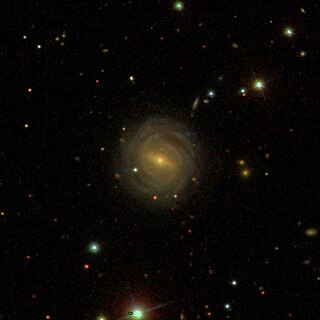
NGC 7222 is a large barred spiral galaxy with a ring structure, located in the constellation Aquarius. It is located 570 million light-years away from the Solar System and was discovered by German astronomer, Albert Marth on August 11, 1864.

IC 848 is a type Sbc barred spiral galaxy located in Coma Berenices. Its redshift is 0.053077 which corresponds the galaxy to be located 727 million light-years away from Earth. IC 848 has an apparent dimension of 0.80 x 0.6 arcmin, meaning it is about 170,000 light-years across. It was discovered by Stephane Javelle on July 22, 1892, which was described per Dreyer as "extremely faint, very small and difficult".

IC 3278 known as PGC 40345, is a large type SBbc spiral galaxy located in Coma Berenices. Its redshift is 0.093851, meaning IC 3278 is 1.29 billion light-years away from Earth, which given its apparent dimensions of 0.80 x 0.6 arcmin, means IC 3278 is 301,000 light-years across. The galaxy was discovered on March 23, 1903, by Max Wolf. Together with two lenticular galaxies, IC 3278 NED01 and IC 3278 NED02, they form a galaxy triplet bearing its same name. According to a study which was conducted by Takase and Miyauchi-Isobe, IC 3278 can be considered an ultraviolet-excess galaxy as it is detected on multi-color plates which was taken via a Kiso Schmidt telescope for 10 survey fields.

IC 3078 is a spiral galaxy with a ring structure located in Virgo. Its redshift is 0.066148, meaning IC 3078 is located 905 million light-years from Earth. With an apparent dimension of 0.50 x 0.5 arcmin, IC 3038 is about 133,000 light-years across. It was discovered by Royal Harwood Frost on May 7, 1904 and is listed in the Virgo Cluster catalogue as VCC 174. However, it is not a member of the Virgo Cluster, but instead a background galaxy.

IC 4539 is a type SABb intermediate spiral galaxy located in Corona Borealis. Its redshift is 0.061307, which corresponds IC 4539 to be 845 million light-years from Earth. It has an apparent dimension of 0.40 x 0.4 arcmin, meaning the galaxy is about 95,000 light-years across. IC 4539 was discovered by Stephane Javelle on June 23, 1903, who found it "as faint, small, round with a very brighter middle."

IC 4160, also known as PGC 1677859, is a spiral galaxy located in Coma Berenices. Its redshift is 0.061443, which corresponds IC 4160 to be 846 million light-years from Earth. It has an apparent dimension of 0.40 x 0.2 arcmin, meaning the galaxy is 99,000 light-years across. IC 4160 was discovered by Max Wolf on January 27, 1904.

IC 2839, known as PGC 3472295, is a spiral galaxy located in the constellation Leo. Its redshift is 0.065734, which corresponds to the galaxy being located 906 million light-years from Earth. IC 2839 has an apparent dimension of 0.30 x 0.1 arcmin, meaning it spans 79,000 light-years across. The galaxy was discovered on March 27, 1906, by Max Wolf.

IC 3447 is a type Sc barred spiral galaxy located in the constellation Virgo. It has a redshift of 0.092479, which means IC 3447 is 1.27 billion light-years from Earth, making it one of the furthest objects in the Index Catalogue. The galaxy has apparent dimensions of 0.30 x 0.3 arcmin, which means IC 3447 is 111,000 light-years across. It was discovered by Royal Harwood Frost on May 10, 1904.
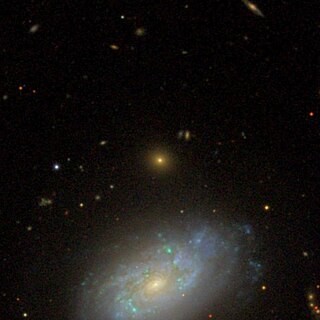
NGC 3950 is an elliptical galaxy of type E, in Ursa Major. Its redshift is 0.074602, meaning NGC 3950 is 1.03 billion light-years or 316 Mpc from Earth, which is within the Hubble distance values. This high redshift makes NGC 3950 one of the furthest New General Catalogue objects.


















